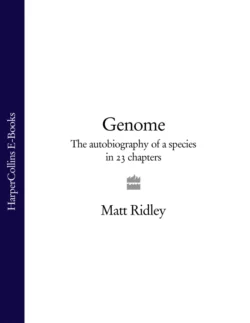Genome: The Autobiography of a Species in 23 Chapters

Matt Ridley
Тип: электронная книга
Жанр: Зарубежная образовательная литература
Язык: на английском языке
Стоимость: 152.29 ₽
Статус: В продаже
Издательство: HarperCollins
Дата публикации: 16.04.2024
Отзывы: Пока нет Добавить отзыв
О книге: The most important investigation of genetic science since The Selfish Gene, from the author of the critically acclaimed and best-selling The Red Queen and The Origins of Virtue.The genome is our 100,000 or so genes. The genome is the collective recipe for the building and running of the human body. These 100,000 genes are sited across 23 pairs of chromosomes. Genome, a book of about 100,000 words, is divided into 23 chapters, a chapter for each chromosome. The first chromosome, for example, contains our oldest genes, genes which we have in common with plants.By looking at our genes we can see the story of our evolution, what makes us individual, how our sexuality is determined, how we acquire language, why we are vunerable to certain diseases, how mind has arisen. Genome also argues for the genetic foundations of free will. While many believe that genetics proves biological determinism, Ridley will show that in fact free will is itself in the genes. Everything that makes us human can be read in our genes. Early in the next century we will have determined the function of every one of these 100,000 genes.